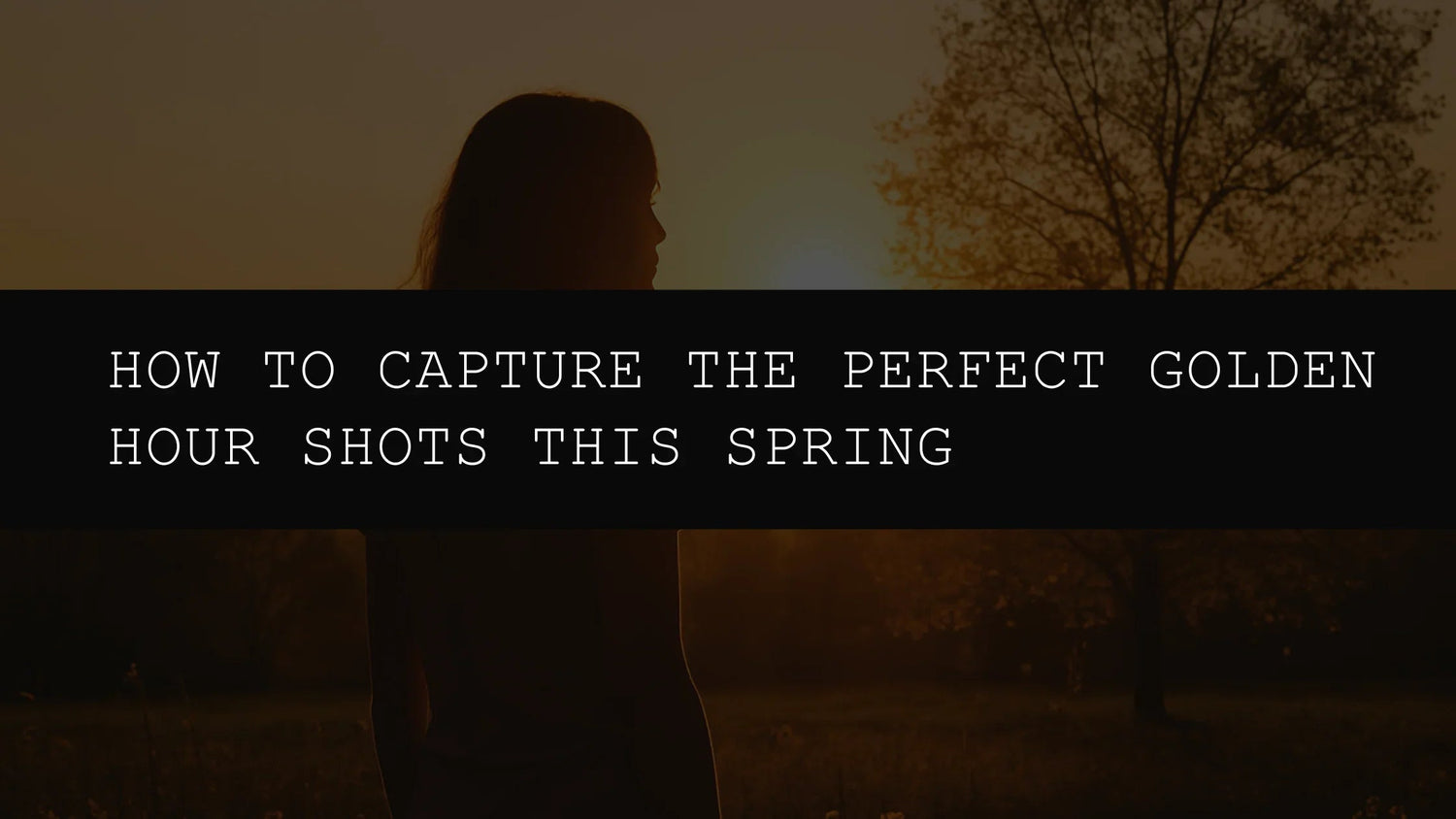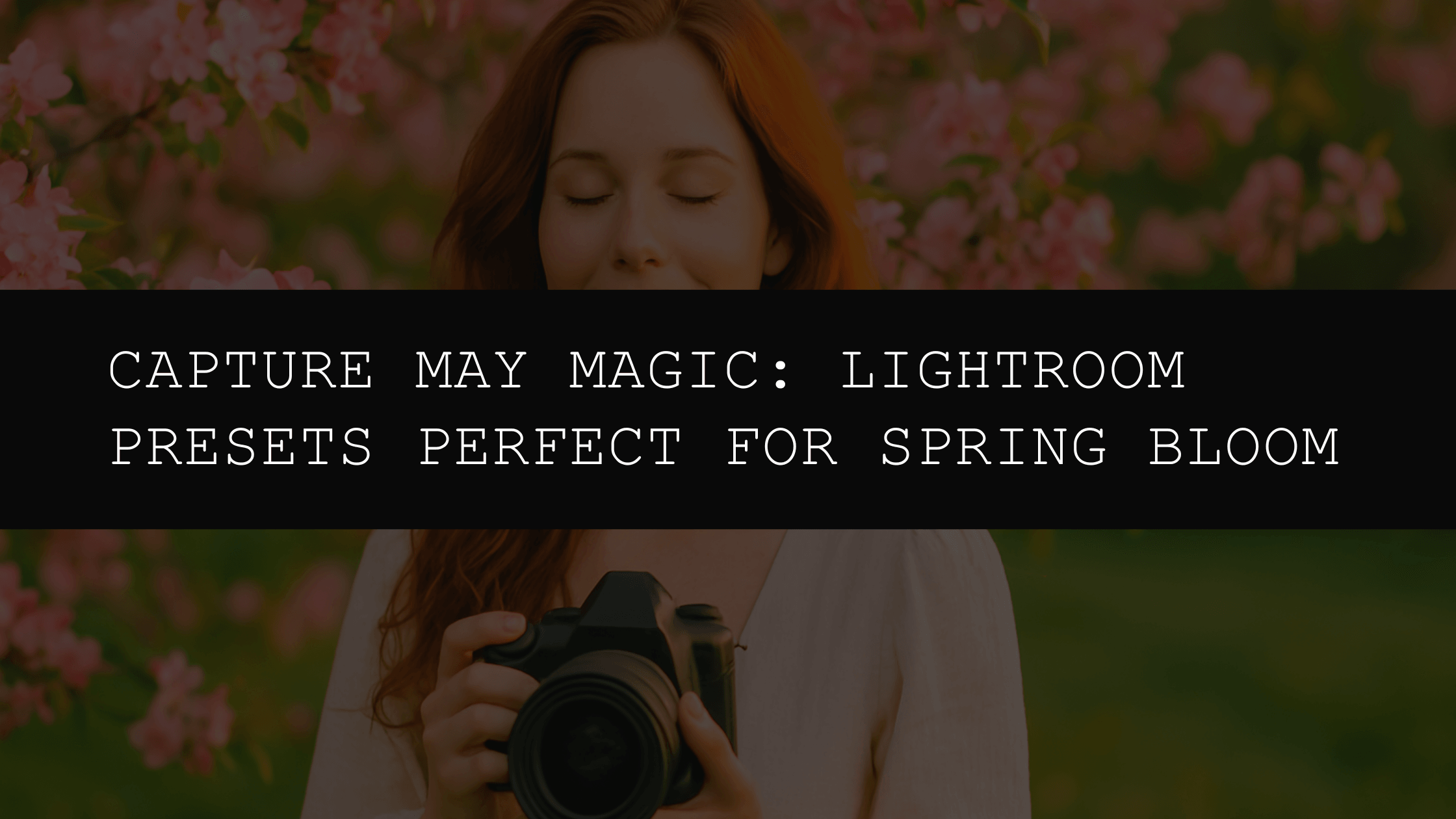How to Capture the Perfect Golden Hour Shots This Spring: A Comprehensive Guide
Spring has sprung, and with it comes the glorious golden hour, that magical time of day when the sun casts a warm, inviting glow on the world. The soft light, the long shadows, the vibrant colors – it's a photographer's dream. Whether you're a seasoned professional or just starting your photographic journey, capturing stunning golden hour shots this spring can be easier than you think. This comprehensive guide will provide you with tips, tricks, and essential tools to help you achieve picture-perfect results, transforming your springtime photos from ordinary to extraordinary. We'll delve into the technical aspects, creative strategies, and post-processing techniques that will elevate your photography to new heights.
Understanding the Magic of Golden Hour: More Than Just Time
Golden hour, also known as the magic hour, typically occurs during the first hour after sunrise and the last hour before sunset. But it's not just about the time; it's about the unique quality of light that defines this period. During golden hour, the sunlight is significantly softer, warmer, and less harsh than the midday sun. This soft, diffused light is incredibly flattering for subjects, minimizing harsh shadows and creating a beautifully even illumination. The low angle of the sun casts longer, more dramatic shadows, adding depth and dimension to your images, enhancing textures, and creating a more captivating and intriguing visual narrative. This soft, directional light beautifully accentuates details, creating subtle highlights and shadows that would be lost in the harsh light of midday.
The color temperature of the light during golden hour is also distinctly different and contributes to its unique appeal. The warm, golden hues, ranging from soft oranges to rich ambers, add a romantic, nostalgic, and even slightly melancholic feel to your photographs, making them visually appealing and emotionally resonant. This unique color palette is what sets golden hour apart, adding a touch of magic that is difficult to replicate at any other time of day. This is why golden hour is so coveted by photographers across all genres, from landscape and nature photographers to portrait, wedding, and even architectural photographers.
Choosing the Ideal Location and Time: Planning for Success
The success of your golden hour shoot hinges on two crucial elements: location and time. Meticulous planning and careful consideration of these factors will significantly increase your chances of capturing truly exceptional photographs. Don't just rely on luck – strategic planning is key.
- Scouting for Stunning Scenery: Spring offers an abundance of picturesque locations. Before your shoot, take the time to explore potential locations and consider the overall aesthetic you're aiming for. Are you drawn to lush green landscapes dotted with wildflowers, the vibrant energy of cityscapes bathed in warm light, the delicate beauty of cherry blossoms in full bloom, or perhaps the dramatic contrast of rugged coastlines meeting a calm ocean? The possibilities are limitless. Look for locations that offer interesting backdrops, compelling leading lines, and points of interest that will add depth and visual complexity to your composition. Consider how the golden hour light will interact with your chosen location, enhancing its existing features and creating new visual opportunities.
- Mastering Light Direction: The Art of Light and Shadow Play: Pay meticulous attention to the direction of the sun. The position of the sun relative to your subject dramatically impacts the mood and feel of your photograph. Side lighting often works best for portraits, illuminating the subject's features without harsh shadows while creating a natural and pleasing three-dimensional effect. Backlighting can create stunning silhouettes and dramatic effects, perfect for capturing a sense of mystery, drama, or even a touch of romanticism. Front lighting is gentler, but it can sometimes lack depth and visual interest. Experiment with different lighting directions to discover what works best to convey your vision and enhance the aesthetic qualities of your subject.
- Precise Timing: Utilizing Technology for Optimal Results: Utilize a weather app, a dedicated photography app (many offer golden hour calculation features), or even an online golden hour calculator to determine the precise golden hour times for your specific location and date. These tools provide the exact start and end times, allowing you to plan your shoot meticulously. Be aware that weather conditions, cloud cover, and geographical factors can subtly affect the actual golden hour, so arriving a bit early provides a buffer and increases your chances of capturing optimal light. This preparedness will minimize wasted time and maximize your chances of capturing that perfect shot.
Essential Equipment and Techniques: Maximizing Your Golden Hour Potential
While you don't need professional-grade equipment to capture stunning golden hour shots, a few essentials will considerably elevate your photography and allow you to maximize the magic of this special time of day. Investing in the right tools will significantly improve your workflow and results.
- Camera Choice: Balancing Quality and Convenience: A DSLR or mirrorless camera offers superior control over settings, allowing for greater flexibility and creative expression. The ability to manually adjust aperture, shutter speed, and ISO provides a level of control that smartphones often lack. However, even a smartphone camera, with its ease of use and readily available editing apps, can produce fantastic results if you understand the basics of photography and composition and are willing to experiment. The crucial element is understanding how to utilize the tools at your disposal to achieve your creative goals.
- Tripod Stability: The Foundation of Sharp Images: A tripod is invaluable for capturing sharp images, especially in the lower light conditions of golden hour. The longer exposure times needed to capture sufficient light will inevitably lead to camera shake if not supported by a sturdy tripod. Maintaining stability is crucial for obtaining the best image quality, especially when shooting in low-light situations. Invest in a high-quality tripod that is stable and easy to adjust.
- Lightroom Presets: Your Creative Shortcut to Golden Hour Perfection: Lightroom presets, like the AI-Optimized Golden Hour Lightroom Presets, can significantly enhance your photos with minimal effort. Designed to amplify the warm, glowing tones of sunrise and sunset, these presets automatically adjust colors, contrasts, and highlights to create a cohesive and professional look. The AI-powered adjustments ensure precise enhancements, saving you valuable time and effort, allowing you to focus on the creative aspects of your workflow. These presets offer a consistent and high-quality starting point for your edits.

Beyond the golden hour presets, consider exploring the creative possibilities of other specialized presets. The AI-Optimized Anime Dreamy Lightroom Presets add a soft, ethereal quality, perfect for whimsical portraits or landscapes. For a romantic, spring-inspired feel, the AI-Optimized Cherry Blossom Tones Lightroom Presets add delicate pink and pastel hues. If you prefer a more dramatic look, explore the AI-Optimized Moody Cinematic Roads Lightroom Presets, which enhance contrasts and create a cinematic mood. For bright, airy images, the AI-Optimized Pastel Bright Lightroom Presets are ideal. These presets offer a variety of stylistic options to match your creative vision and streamline your post-processing workflow.




Mastering the Art of Composition: Guiding the Viewer's Eye
Even the most stunning light can be undermined by a poorly composed photograph. Understanding basic composition techniques is crucial for creating visually appealing and impactful images. Composition is the art of arranging elements within your frame to create a harmonious and engaging image.
- Rule of Thirds: Breaking Away from the Center: Instead of placing your subject in the dead center of the frame, try positioning it along one of the imaginary lines that divide the image into thirds, both horizontally and vertically. This creates a more dynamic and balanced composition, drawing the viewer's eye to the subject naturally. This simple technique elevates the overall visual appeal of your images.
- Leading Lines: Creating Depth and Visual Flow: Utilize natural lines such as roads, rivers, fences, or even tree branches to draw the viewer's eye towards your subject. These lines create a sense of depth and perspective, leading the viewer deeper into the image and enhancing the storytelling aspect of your photography. They add visual interest and guide the eye through the scene.
- Framing: Enhancing Focus and Adding Depth: Use elements in the scene, such as trees, arches, doorways, or even natural rock formations, to frame your subject. This creates a natural border that enhances the overall composition, isolates the subject, and adds a touch of artistic flair. Framing draws attention to the subject and can create a more intimate and focused feel.
- Symmetry and Patterns: Order and Visual Harmony: Look for opportunities to incorporate symmetry or repeating patterns into your composition. These elements create a sense of order and balance, adding visual appeal and a sense of harmony. Symmetry can be particularly effective in emphasizing the beauty of a scene or subject.
- Negative Space: The Power of Empty Space: Don't be afraid to utilize negative space—the empty areas around your subject. Negative space can be just as important as the subject itself, providing breathing room and highlighting the subject. It can create a sense of calmness and serenity or draw even more emphasis to the subject.
Post-Processing Perfection: Refining Your Golden Hour Masterpieces
Post-processing is an essential step in bringing out the full potential of your golden hour photographs. While capturing the perfect shot in-camera is crucial, editing allows you to refine details, enhance colors, and achieve the specific aesthetic you envision. This is where you fine-tune your images and bring your creative vision to life.
Here's where your Lightroom presets come into play. Applying a preset provides a foundation for your edits, setting the tone and mood. But remember, presets are just a starting point; they're not meant to replace your creative choices. Don't be afraid to adjust individual settings to fine-tune the image to your preferences. Explore the different sliders, adjusting contrast, highlights, shadows, white balance, and saturation to achieve your desired results. A subtle adjustment can make a big difference; it's all about mastering the details.
Consider these advanced editing techniques:
- White Balance Fine-Tuning: Achieving Natural Color Temperature: Ensure the white balance is accurately adjusted to reflect the warm tones of golden hour without making the image look overly yellow, orange, or unnatural. Slight adjustments can significantly impact the overall mood and realism of your photographs.
- Selective Adjustments: Localized Enhancements: Don't be afraid to use masking or brush tools to make local adjustments. You can selectively brighten or darken specific areas, enhancing contrast, drawing attention to key elements, and creating a more balanced composition. This level of precise control allows you to address specific areas that need adjustment.
- Sharpening and Noise Reduction: Refining Details and Removing Artifacts: Carefully sharpen your images to enhance details without introducing artifacts or making the image appear grainy. Use noise reduction tools to minimize graininess, particularly in areas of low light. These subtle adjustments create a crisp and refined final image.
- Color Grading: Enhancing the Mood and Tone: Experiment with color grading techniques to subtly shift the overall color palette of your image, enhancing its mood and tone. This can further refine the golden hour effect and create a more cohesive and visually appealing image.
Conclusion: Embrace the Golden Hour and Unleash Your Creativity
Capturing the perfect golden hour shots this spring is a rewarding experience that combines technical skills, creative vision, and a touch of patience. By understanding the nuances of light, mastering composition techniques, and utilizing the power of AI-optimized Lightroom presets, you'll transform your springtime photographs from ordinary snapshots into extraordinary works of art. It's about taking control of your photography and expressing your creativity.
So, grab your camera, explore your surroundings, and embrace the golden hour magic. The results will speak for themselves. Remember to practice, experiment, and most importantly, have fun! The golden hour is waiting to be captured; are you ready to create your masterpieces?




Leave a comment
This site is protected by hCaptcha and the hCaptcha Privacy Policy and Terms of Service apply.